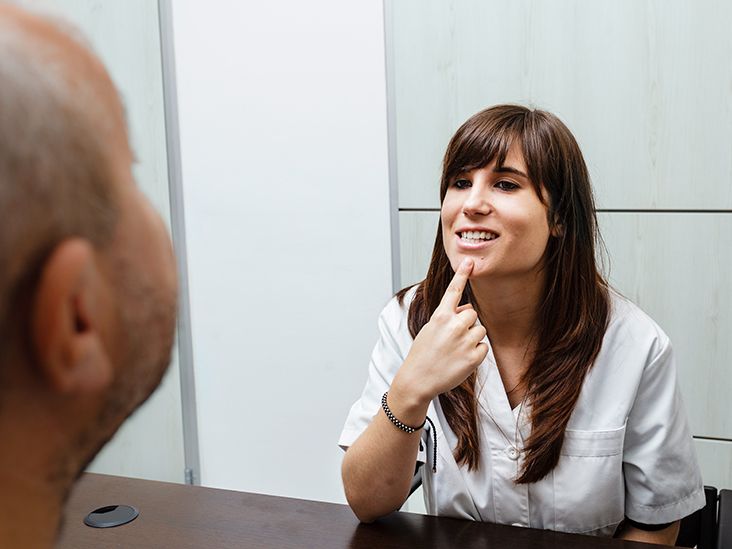Neuromuscular disorders affect the nerves that control certain muscles in your body. Some examples include amyotrophic lateral sclerosis (ALS) and multiple sclerosis (MS).
Neuromuscular disorders affect your voluntary muscles. These are the muscles you can choose to move, such as the ones in your arms, legs, or face.
Disorders that affect voluntary muscles can be genetically inherited (passed down from your parents) or may develop over time as a complication of certain health conditions like an autoimmune disorder.
Read on to learn more about different types of neuromuscular disorders, what their symptoms include, and what treatments may help.
Your body contains hundreds of voluntary muscles that allow you to do things such as walk, talk, blink, and eat. Neuromuscular disorders disrupt your ability to control these muscles.
When you have a neuromuscular disorder, the neurons (nerve cells) that help your brain control your voluntary muscles become damaged or die off, leading to weakness.
Neuromuscular disorders may affect the peripheral nerves, skeletal muscles, or neuromuscular junction (where the nerves and muscles meet).
There are many neuromuscular disorders. Some common ones include:
Amyotrophic lateral sclerosis (ALS)
This condition leads to the loss of nerve cells in the brain and spinal cord. Weakness in the muscles causes trouble with movement and speech and may eventually lead to issues with swallowing and breathing.
Charcot-Marie-Tooth disease (CMT disease)
This group of disorders is inherited, which means it can run in families. Early symptoms include weakness in the lower limbs, feet, and hands.
CMT progresses slowly and may not affect your life span.
Chronic inflammatory demyelinating polyneuropathy (CIDP)
CIDP leads to weakness in the extremities — your arms and legs. It’s caused by autoimmune issues that damage the myelin sheath. This is the coating surrounding the peripheral nerves.
Guillain-Barré syndrome (GBS)
This condition affects the myelin sheath and often begins after an illness. Symptoms and progression vary from person to person, but it typically begins with weakness in the legs and spreads rapidly to the rest of the body.
Like CIDP, the cause is likely the immune system attacking the peripheral nervous system.
Lambert-Eaton syndrome
This autoimmune condition leads to weakness and fatigue in the arm and leg muscles. It’s caused by antibodies that damage the voltage-gated calcium channels in the neuromuscular junction. This affects the connection between your nerves and muscles.
Multiple sclerosis (MS)
MS is also caused by the immune system attacking the myelin sheath around the peripheral nerves. It affects the brain, spinal cord, and optic nerves.
People with MS have attacks that lead to either a progression of symptoms or periods of time without new symptoms (stabilization).
Myasthenia gravis
This autoimmune condition is caused by damage to muscle receptors and leads to muscle weakness throughout the body. Symptoms include weakness in the arms and legs as well as issues with vision, speaking, and eating.
Peripheral neuropathy
This group of disorders affects nerves beyond the brain and spinal cord. It leads to weakness, pain, and numbness in the arms, legs, hands, feet, face, and mouth.
Spinal muscular atrophy (SMA)
This group of genetically inherited disorders causes symptoms such as hypotonia (decreased muscle tone) in the arms and legs, feeding issues, and breathing issues. Many forms start in early childhood, but some begin in adulthood as well.
The symptoms you experience with a neuromuscular disorder vary depending on the condition you have, and the same is true of their severity. One person may have very mild symptoms, while another’s could be life threatening.
Likewise, your symptoms can begin starting in infancy or not until adulthood. The progress of symptoms may be slow, rapid, or even change over time.
Symptoms may include:
- weakness in the muscles
- muscle atrophy
- muscle cramping
- stiffness (spasticity) in the muscles
- muscle pain
- difficulty breathing
- difficulty swallowing
- issues with balance and movement
- trouble with vision
The cause of neuromuscular disorders depends on the specific disorder.
For some, such as ALS, the cause isn’t known. Others, such as CIDP and MS, are caused by autoimmune issues. SMA and CMT may be inherited or caused by spontaneous gene mutations.
Additional risk factors
- age
- family history
- history of smoking
To diagnose a neuromuscular disorder, a healthcare professional will first likely test your reflexes and look for signs such as loss of muscle tone (atrophy).
From there, the following tests may help with diagnosis:
- Blood tests: They’ll likely order tests to look for levels of certain enzymes.
- Electromyography: This can assess the electrical activity in the muscles.
- Imaging: Tests like magnetic resonance imaging (MRI) look for issues with the brain and spinal cord.
- Spinal tap: Also known as a lumbar puncture, this tests the cerebrospinal fluid.
- Nerve conduction velocity testing: This test can determine how well messages are being sent from the nerves to the muscles.
- Muscle biopsies: This involves taking a sample of muscle tissue and testing it.
- Genetic testing: This can find any mutations that may have been inherited.
Most neuromuscular disorders can’t be cured. Instead, treatment is prescribed to ease symptoms and slow the disease from getting worse.
However, in the case of LEMS, you can be cured by treating the underlying cancer if cancer is the underlying cause.
Medications may include:
- drugs to relieve muscle pain, weakness, cramps, and stiffness
- drugs to address nerve impulses and muscle strength
- immunosuppressants if a disorder is caused by autoimmune issues
- high dose immunoglobulin therapy to build antibodies
Other treatments include:
- physical therapy to restore muscle tone and work on motor skills
- occupational therapy to learn new ways to go about daily tasks and save energy
- surgery to relieve pressure on the nerves or remove the thymus for people with myasthenia gravis
Each neuromuscular disorder and individual case is unique. Some conditions may lead to only mild symptoms that don’t progress, while others may progress rapidly and become debilitating.
Treatments may slow the progression of some conditions. Therapies can also help with motor function and performing everyday tasks.
Researchers are also looking into new treatments to improve outcomes. For example, researchers are looking at the drugs rasagiline, tirasemtiv, and mexiletine for ALS, as well as bone marrow transplants to treat mitochondrial neurogastrointestinal encephalomyopathy.
The following are answers to commonly asked questions about neuromuscular disorders.
Can neuromuscular disorders affect children?
Yes. Children can develop neuromuscular disorders, the
Other common disorders in children include SMA, myotonic dystrophy (a form of muscular dystrophy), and CMT disease. These conditions are usually genetic, so children are born with them.
Can neuromuscular disorders affect breathing?
Neuromuscular disorders may affect breathing for some people. You may first notice shortness of breath at night or when lying down flat.
The three main breathing issues associated with neuromuscular disorders are nighttime hypoventilation, obstructive sleep apnea, and central sleep apnea.
Can a COVID-19 vaccine cause a neuromuscular disease?
Researchers can’t currently establish a firm link between neuromuscular disorders and the COVID-19 vaccines. In
It’s important to note that people can develop GBS after all vaccinations, not just COVID-19.
Are people with neuromuscular disorders at a higher risk of COVID-19 (or for developing a more severe case of COVID-19)?
Researchers have shared that some people with neuromuscular disorders can face certain challenges with COVID-19. For example, people taking immunosuppressants may have a higher risk of illness. And, once sick, the illness may make breathing tougher for people who already have breathing issues.
That said, an increased risk of COVID-19 and severe complications will depend greatly on the type of disorder a person has, the treatments they’re using, and factors such as age and other health conditions.
Make an appointment with a doctor if you experience symptoms associated with neuromuscular disorders such as weakness or tingling in your arms or legs.









